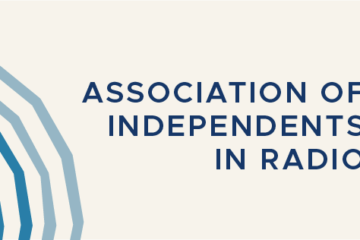Mobile giving a ‘no-brainer’ for TAL postcast audience
It’s not the best way to collect big annual gifts from station members, pubcasting fundraisers agree.
But This American Life’s producers confirmed that giving-by-texting among their many devoted listeners holds considerable potential.
Beginning last November, appeals for $5 donations included in four of the show’s weekly podcasts brought in $142,880 from 28,576 listeners, as of April 15, according to Seth Lind, production manager.
To donate, a podcast listener simply texts “LIFE” to 25383 and TAL receives a $5 donation, minus fees, paid through the giver’s wireless phone bill.
The vast majority of the text gifts to TAL were sent during the campaign’s first month, but fans continue to respond. Last week, in mid-April, 50 listeners donated by texting. “This is coming in from podcasts that went out in December,” Lind said.
TAL has a long history of creative fundraising — host and creator Ira Glass personally delivered pizzas to early supporters of the show. Its audience of 600,000 podcast subscribers also fits the profile of the tech-savvy, me-media consumer willing and able to make spur-of-the-moment donations if they don’t involve too much hassle.
For fundraisers at public broadcasting stations, experiments with text-giving campaigns have been disappointing so far (Current, March 22). Only a handful of stations have tried it, and none has received enough contributions to cover the set-up and monthly access fees they pay to companies that handle the donations. Still, many development pros see huge potential in the not-too-distant future as more consumers upgrade to smart phones and become comfortable with the technology.
TAL’s producers decided to try mobile giving out of “raw curiosity,” Lind said, after being approached by the mobile marketing company Mobile Commons. The simplicity and immediacy of the technology were appealing, he said.
“So many mobile phones are also media players, and a lot of people are consuming the podcast on the same device they text with. We thought it would make it easier for people to combat the tendency to say, ‘I’ll do that later.”
Glass first asked podcast listeners to pony up some money for bandwidth costs in December 2008. The appeals now run in eight weekly podcasts a year and typically ask listeners to make donations through the show’s website. The campaigns have been so effective, Lind said, that Glass now requests general financial support for the show, not just for server costs.
“We have an abnormally high loyalty to the show because of the personal nature of the content,” Lind added. “It breeds a different relationship to the show.”
In the first month of the text campaign, also promoted on This American Life’s Facebook page, the number of contributing listeners doubled from previous fundraisers, but the proceeds were roughly the same, Lind said. “In my opinion, it’s good to have a small amount coming from a lot of people.”
Glass deliberately chose to request $5 gifts, rather than the $10 maximum. “He wanted it to feel like a no-brainer,” Lind said. That’s the kind of money these listeners can spend on iTunes without even thinking about it. “We wanted them to have the idea of this being a lowering of the bar.” For the next podcast fundraiser, planned for June, Glass will probably request $10 gifts.
Podcast supporters who donate through the website typically have been much more generous, and Lind suspects that the text appeals “poached” some contributors who might have given more. Still, there remains a vast pool of TAL podcasters who don’t respond at all.
As Lind sees it, text-gift appeals don’t make as much sense for TAL’s broadcast audience of 1.7 million listeners, which he describes as separate and distinct from those who download the show to their mobile devices and laptops. Public radio listeners are an older demographic and they’re not as into on-demand and mobile media; TAL podcasters, by contrast, are younger, and many of them are so into digital media that they may not be aware This American Life is broadcast on the radio.
“A lot of them don’t know what public radio is,” Lind said. “They saw it on iTunes and signed up and liked it. We see comments like, ‘This is a radio show?’”






Even though it’s on radio, I love “This American Life.” Their listeners do, too, and they pay their producers much better than average, which doesn’t hurt.